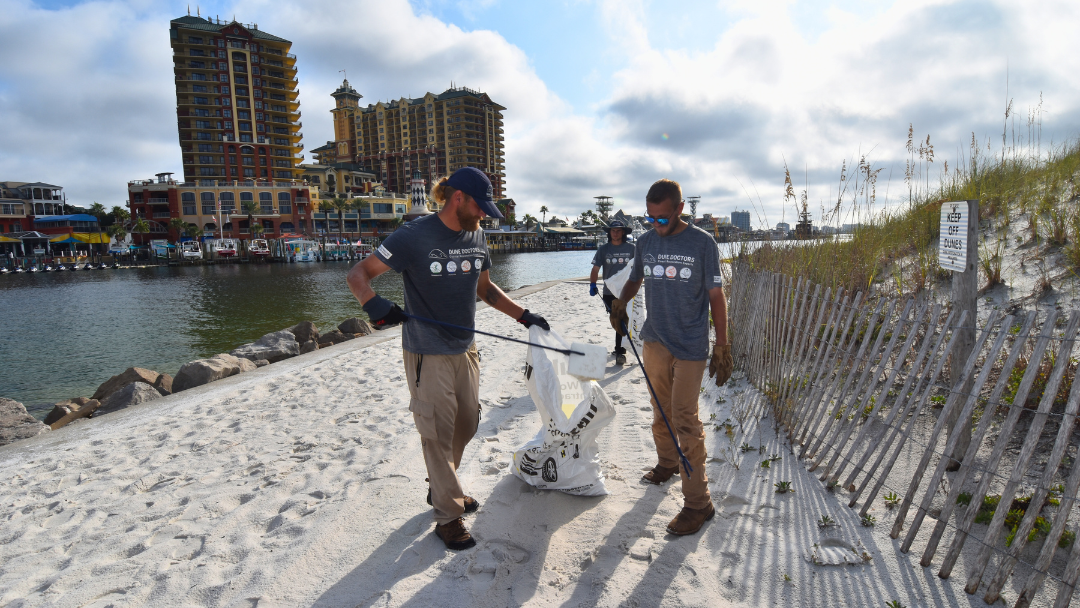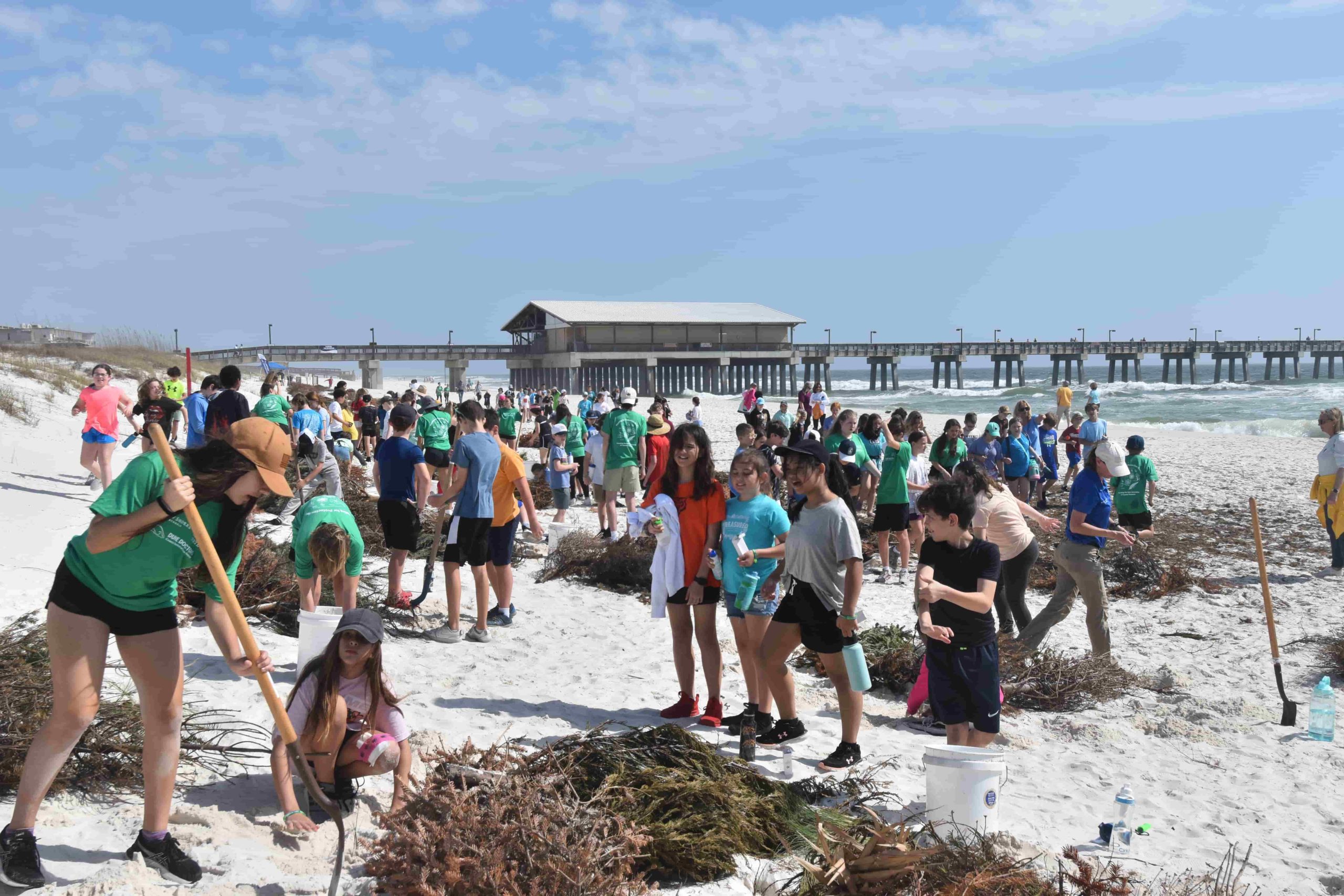Thriving landscapes are often the result of careful planning and consistent maintenance. Coastal property owners have stewardship over two outdoor areas: their recreational yard and their protective dune ecosystem. Even if there are a few similarities to how these environments are best cared for, the differences are numerous and need to be addressed in two separate environment-specific plans. Here, we compare seven major aspects of what we call the white landscape (dune ecosystem) to the green landscape (manicured yard planted in composite soil).
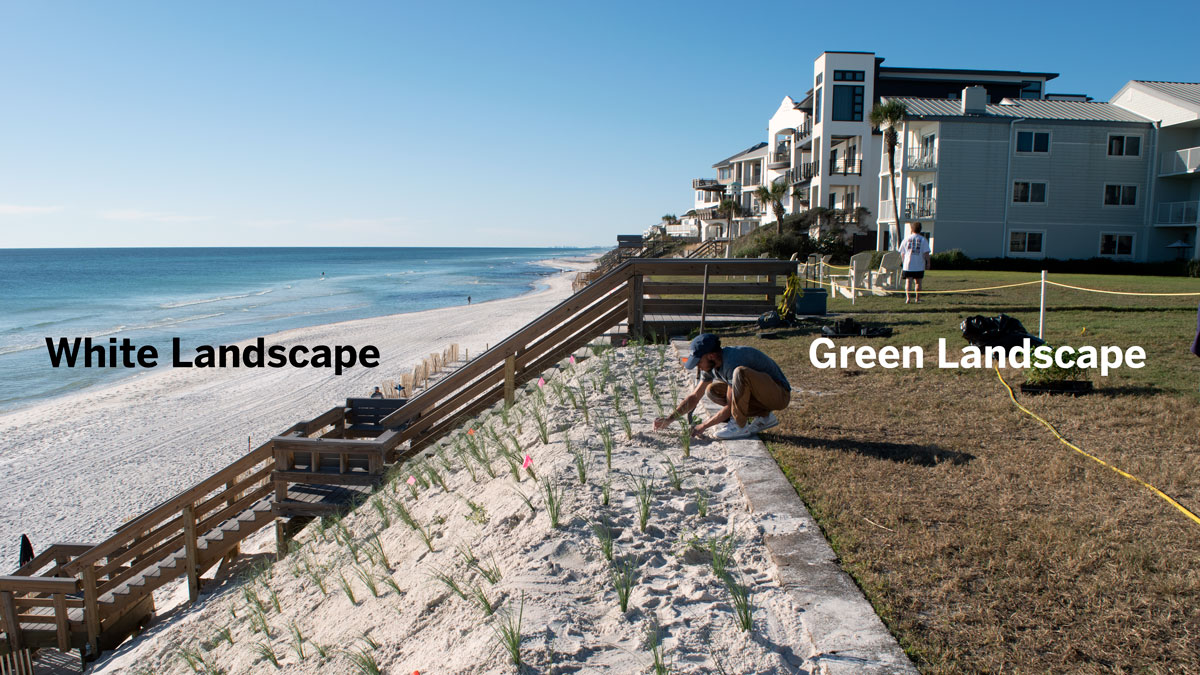
1. Purpose: Resiliency vs. Leisure
White Landscape: Dunes are natural barriers that can help absorb the impact of storm surge and protect coastal properties from storm damage.
Green Landscape: Backyards offer space for leisure, beauty, exercise, and pet use.
2. Return-on-investment: Both are huge!
White Landscape: Every $1 invested in building hurricane protection reduces a property’s average loss exposure by an estimated $105.
Green Landscape: A well-manicured and maintained yard can increase property value by 28%, according to landscape economist John Harris.
3. Root Depth: Long vs. Shallow
White landscape: Dune-building vegetation has evolved to develop impressive root systems. Individual plants have 40 to 50 roots that can each grow upwards of 25ft long. The result is vast, interconnected root webs that grow deep into the core of the dune. This root mass allows the plants to capture the limited water and nutrients available in the coastal environment.
Green landscape: Most turf grasses can develop roots that are 6-12 inches long. Frequent irrigation does not encourage deep root growth.
4. Soil Composition: Sand vs. Composite Soil
White landscape: Coastal soil tends to have high salinity (salt count) and is nutrient-deprived. Only a few resilient plant species can grow in it.
Green Landscape: Yards typically comprise a composite, nutrient-rich soil that can foster a wide range of vegetation.
5. Irrigation: Drought Tolerance vs. Daily Water Dependence
White Landscape: Routine irrigation heightens dune erosion risk. Before killing the vegetation through rot or disease, the excess water causes the dune-building plants to develop shallow roots. Shallow roots cannot stabilize loose sand, compromising the integrity of the dune. Continue reading about dune irrigation.
Green Landscape: Yards benefit from daily irrigation, especially during the extended periods of drought regularly experienced by the Gulf Coast.
6. Fertilization: Dune-specific vs. Basic
Any landscape that hosts a variety of plants and trees needs nutrient-rich soil. However, fertilizer is a chemical that, if applied incorrectly, will pollute the environment. Regardless of where the application is made, you should always seek the advice of an expert.
White Landscape: The snow-white sand of the Eastern Gulf Coast is made of quartz crystals. Quartz crystals are incredibly smooth and unable to hold on to nutrients, therefore, the application of coastal-specific, slow-release fertilizer is recommended twice a year. Using a basic fertilizer is insufficient because the nutrients will be washed away before the plants can absorb them. Continue reading about proper dune fertilization.
Green Landscape: Fertilizing a yard may require a similar application frequency, however, it is the type of fertilizer used, not the frequency, that will result in the most notable difference between healthy and malnourished plants.
7. Pruning: Illegal vs. Legal
White Landscape: Unpermitted removal of native coastal plants may result in legal consequences and weaken or erode the dune. Dune Doctors promotes pruning and dethatching (removing dead plant material) to stimulate plant growth. However, to protect dune ecosystems from further erosion, governmental agencies from the local to federal levels regulate all efforts to clean or enhance the dune vegetation. Continue reading about dethatching.
Green landscape: Mowing and pruning can stimulate growth while minimizing invasive species.
8. Permitting: Strong vs. Moderate Government Involvement
White Landscape: Because dunes provide coastal communities with protection from storm surge, the land south of the coastal construction line is protected. An individual must obtain permits and special qualifications before implementing any restoration.
Green Landscape: Government involvement in landscaping hinges on whether the project is seaward or landward of the coastal construction line. Anything seaward of the CCL requires a coastal restoration expert who understands the complexity of both the regulations and the fragile environment’s needs.
What does a Dune Maintenance Program Accomplish?
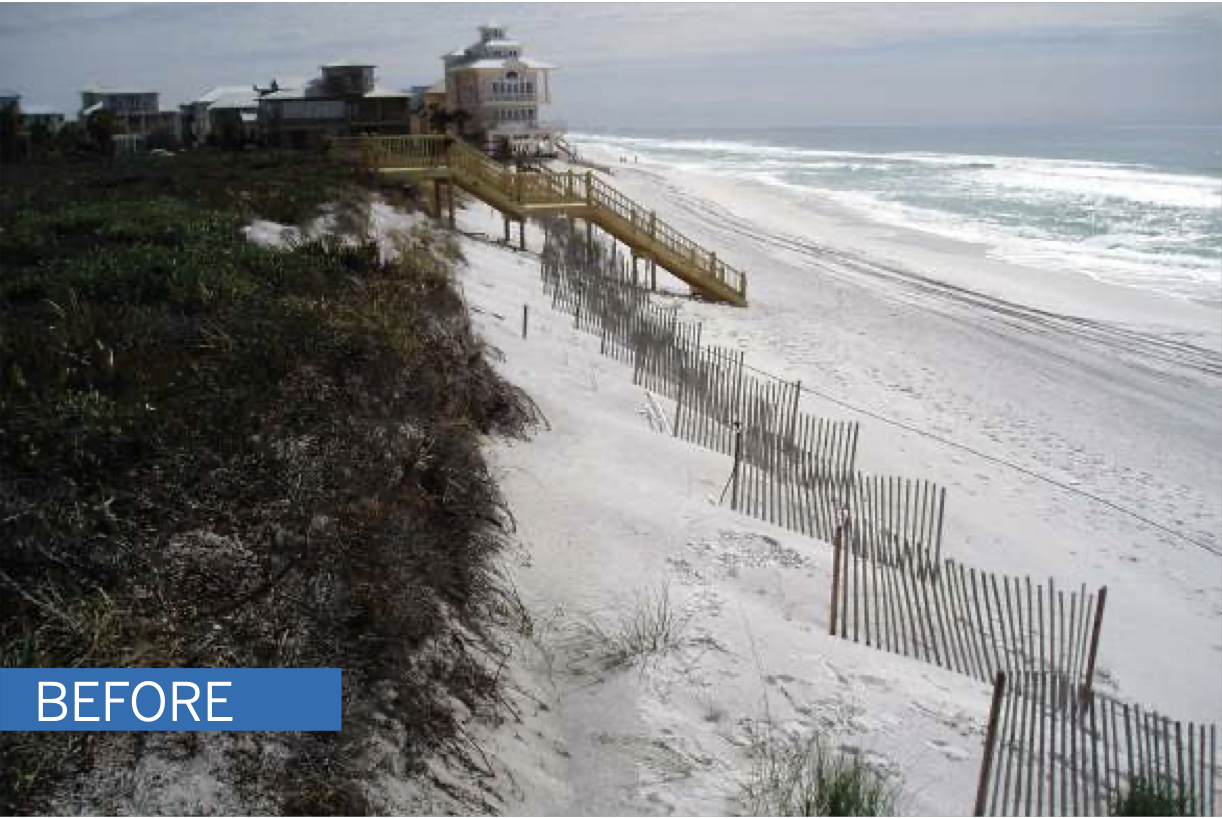
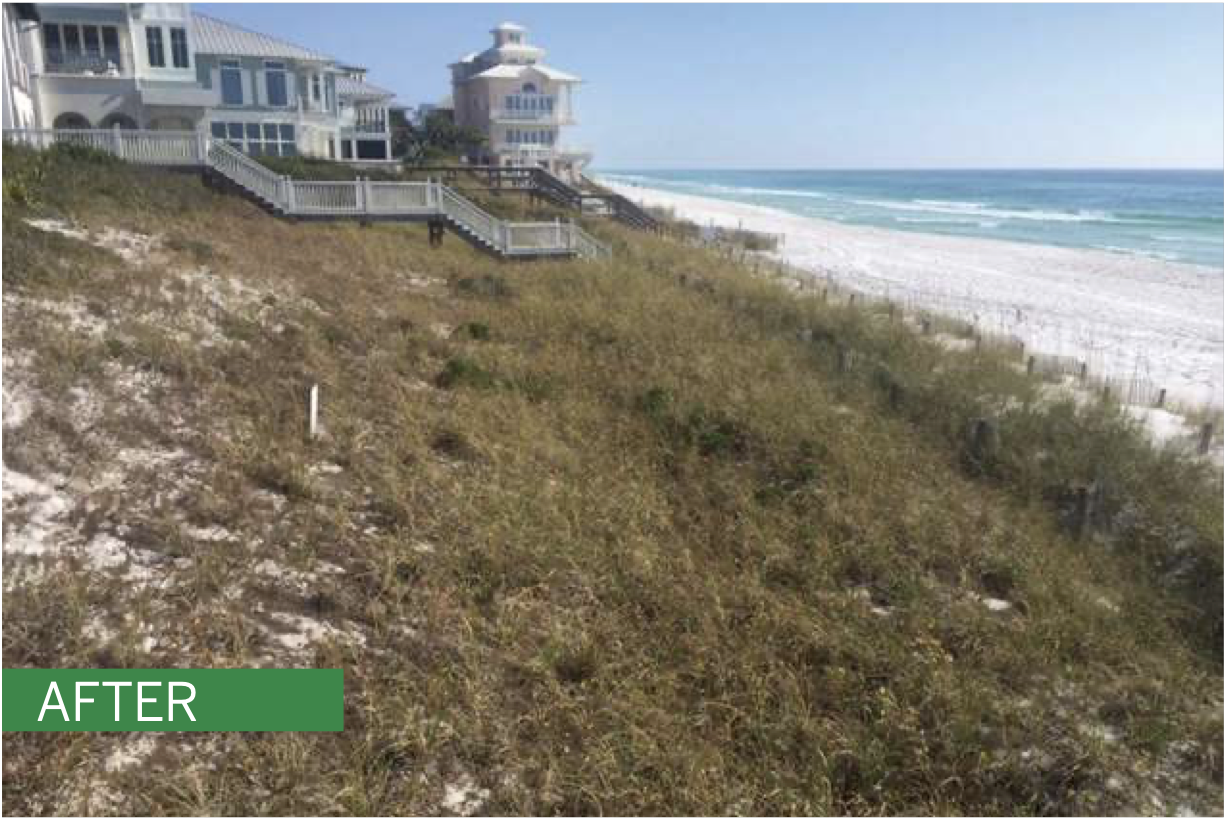
A dune maintenance program should help protective berms stabilize and provide season-specific care for your coastal vegetation. Like lawn care, dune maintenance revolves around sustaining an environment that supports and nurtures plant growth. Dune Doctors’ maintenance program removes built-up dead plant material, invasive plants, and weeds to protect the dune-building plants from being suffocated or having to compete for food. Furthermore, our routine fertilization provides the plants with the nutrients necessary to sustain healthy root growth, thus accelerating the dune’s development. This ongoing care nurtures massive root systems that anchor your dunes in place and defend your coastal property from storm surge. For a success story about a property that managed to accumulate $180,000 in free sand in part due to the implementation of our maintenance program, click here.
Transforming a Dune into a Lawn may Lead to Hefty Fines
Earlier this year, nearly three-dozen Newport Beach, California homeowners illegally landscaped lawns on the beach. The consequences amounted to roughly 1.7 million dollars in fines due to encroachment on public beaches and destruction of the protected dune environment. A manicured lawn is aesthetically pleasing. However, as easy as it may have become for these homeowners to walk to the beach, they also created a smooth path for high tides and storm surges to flood their waterfront homes. With these Newport Beach homes in mind, before requesting a lawn care service that does not specialize in coastal restoration to perform any work on your dunes, consider the high likelihood that they may damage the protected ecosystem, resulting in financial penalties for you.
References:
https://newsroom.fmglobal.com/releases/fm-global-every-dollar-spent-on-hurricane-protection-can-prevent-us-105-in-business-property-loss-disruption
https://www.mountainviewlandscapewnc.com/does-landscaping-increase-home-value/
https://www.courthousenews.com/socal-homeowners-fined-1-7-million-for-blocking-beach/ 4.https://oceanservice.noaa.gov/news/dec15/california-flooding.html
